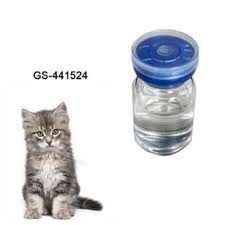
- +86-13363869198
- weimiaohb@126.com

Nov . 23, 2024 14:03 Back to list
cat fip gs 441524
FIP in Cats Understanding and Controlling Feline Infectious Peritonitis
Feline Infectious Peritonitis (FIP) is a complex and often devastating disease that affects cats, primarily caused by certain strains of the feline coronavirus (FCoV). Understanding FIP is crucial for cat owners and veterinarians alike, especially as advances in therapy have transformed the landscape of this once-fatal disease.
What is FIP?
FIP is a progressive disease that arises when the FCoV, which is usually benign, mutates within a cat's body and leads to an abnormal immune response. The mutated virus can then lead to two forms of FIP the effusive form, characterized by the accumulation of fluid in body cavities, and the non-effusive form, which is more insidious and involves lesions in various organs without fluid accumulation. Both forms can be lethal without intervention, making recognition and understanding of symptoms paramount for pet owners.
Symptoms and Diagnosis
Cats with FIP display a range of symptoms, which can vary greatly depending on the form of the disease. Common signs include fever, lethargy, decreased appetite, weight loss, and, particularly in the effusive form, abdominal swelling due to fluid buildup. Diagnosing FIP can be challenging; it often involves a combination of clinical signs, laboratory tests, and sometimes imaging techniques like ultrasound.
There is no definitive test for FIP; however, the presence of certain antibodies against the coronavirus, coupled with clinical findings, can guide veterinarians toward a diagnosis. Efforts are underway to develop more accurate diagnostic tests, which will be a significant advancement in recognizing this complex disease.
Treatments for FIP
cat fip gs 441524

Traditionally, FIP was considered a death sentence, but recent breakthroughs in treatment have changed this perception. Antivirals such as GS-441524, a nucleotide analogue, have shown considerable promise in treating cats diagnosed with FIP. Administering drugs like GS-441524 involves a regimen of daily injections and monitoring, and success rates have been reported as high as 80% to 90% for some patients.
Treatment not only aims to eliminate the pathogen but also to reduce inflammation and help restore the cat's immune response. This dual approach is critical for effectively managing FIP and enhancing the quality of life for affected cats.
Preventing FIP
Prevention of FIP starts with responsible cat ownership. Keeping cats indoors, reducing stress, and maintaining good hygiene can help lower the likelihood of coronavirus transmission. Multi-cat households should practice regular cleaning to avoid the spread of infectious diseases. Spaying and neutering can also play a role in reducing stress-induced behaviors that may predispose cats to FIP.
Furthermore, vaccines for FIP have been developed, though their efficacy is still debated within the veterinary community. These vaccines may provide a limited defense against certain strains of coronavirus but are not foolproof.
Conclusion
FIP is a serious condition that demands attention from cat owners and veterinary professionals alike. While it can be a harrowing diagnosis, advancements in treatment options provide hope for many cats afflicted with this disease. Early detection and intervention are key, and ongoing research will further enhance our understanding and management of FIP.
As we learn more about FIP, it is vital for cat owners to remain informed about the disease, engage with their veterinarians, and keep abreast of new therapies and preventative measures. The fight against FIP continues, but with hope and dedication, we can strive for a future where this disease is manageable, allowing our feline companions to live healthier, longer lives.
-
High-Quality GS-441524 for White Liquid Type Factories & Suppliers
NewsJul.29,2025
-
High-Quality Pharmaceutical Intermediates for Sale – Reliable Supply
NewsJul.29,2025
-
High-Quality Pharmaceutical Intermediates for Sale - Reliable Solutions
NewsJul.29,2025
-
High-Quality Pharmaceutical Intermediates Supplier for Global Market
NewsJul.28,2025
-
GS-441524 for White Liquid Type Factories – High Purity & Reliable Supply
NewsJul.28,2025
-
Buy 158861 67 7 Peptide for Effective Weight Loss and Muscle Gain
NewsJul.27,2025